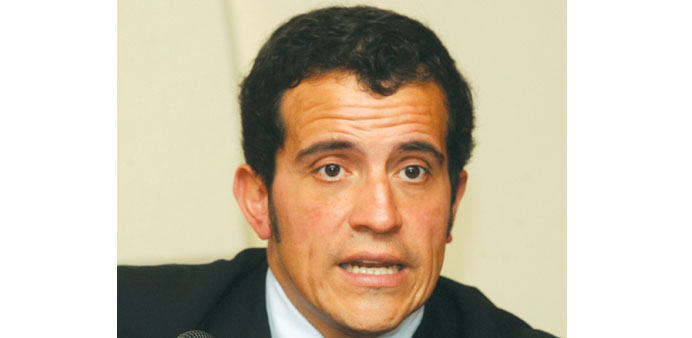Chile is by far the ‘safest landing ground’ in Latin America for Qatari investors, a senior official from the mineral rich country’s foreign investment committee (FIC) told Gulf Times.
“Chile in the Latin American context is what Singapore is to Asia. It is the most institutionalised, economically efficient, and transparent business destination,” claimed Matias Mori, executive vice president, FIC.
A projected growth rate of 4.4%, according to the International Monetary Fund, places Chile on the top of the Organisation for Economic Co-operation and Development member-states and Latin America.
According to United Nations Conference on Trade and Development (Unctad), Chile was one of the seven economies in which the inflow of FDI showed the highest growth last year.
Chile was for the first time Latin America’s second largest recipient of foreign direct investment (FDI), the inflow reached $30.3bn, the highest ever in the country’s history.
“This represented an increase of 32.2% on 2011 and was a new historical record,” Mori observed while pointing out that when global FDI fell by 18% in 2012 to $1.3trn, from $1.6trn in 2011, by contrast FDI in Latin America and the Caribbean rose by 7.2% to $232bn.
Chile was number six in the global top 10 host economies for FDI, going by the average inflows for 2009-2011.
If World Bank’s Doing Business 2013 index rated Chile 37 out of 185 economies, the Corruption Perception Index of Transparency International ranked it 20 out of 176 economies, and the Heritage Foundation’s Economic Freedom Index 2013 placed the country seven out of 177 economies.
“Chile has an open economy with 22 Free Trade Agreements with 60 countries, which cover 63% of world population, 86% of the global GDP, and 90.5% of the country’s export markets,” Mori said.
Chile, which has entered into avoidance of double taxation agreements with 25 countries, has 27.5% of the world’s copper reserves.
Chile, also the world’s largest producer of copper (34%), natural nitrates (100%), iodine (58%), rhenium (52%), lithium (45%) and the fifth largest silver producer, has fifth place in Current Mineral Potential Index (Fraser Institute).
Mining companies plan to invest $104bn during the next eight years in Chile and will spend over $21bn per year. There are around 4,000 supplier
companies.
“The opportunities in the mining industry include equipment and supplies, engineering and consulting, construction, production support services, and for mining suppliers to create regional headquarters, export and diversify area of activity,” the official said.
Chile is the world’s largest exporter of table grapes, plums and blueberries, and top three in avocado, kiwi, raspberries and apples. There are new opportunities in berries, cherries, and walnuts.
The world’s fifth largest wine producer also offers new opportunities in organic wine, ‘functional’ foods based on grape sub-products, and grape seed oil.
Chile is the world’s second largest producer of farmed salmon. There are opportunities in salmon food and cage services.
The energy sector offers lot of opportunities as Chile requires more than 8,000MW of new projects by 2020. The present total installed capacity is 17,000MW and electricity consumption is expected to grow 6% to 7% annually.
“There is a need to become independent in terms of energy supplies and natural conditions are suitable for non-conventional renewable energies,” Mori said.
The energy industry in Chile is entirely private owned and 50% of the production is
hydro-based.
The official also mentioned that the US, Spain and Canada are the top three investors in Chile, according to the 2009-2012 FDI inflows totalling $81.5bn, with as much as 50.1% going to mining.
“I would advise people in Qatar, if they are considering Latin America, with all its differences and complexities, Chile is by far the safest landing ground,” Mori added.



